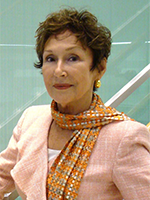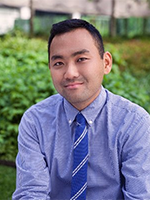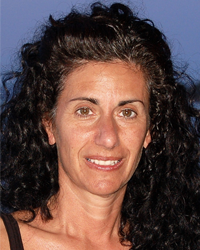An Ebola outbreak in a remote area. Trauma surgery in a conflict zone. A cholera treatment center in a refugee camp. These are the usual places you’ll find teams from Doctors Without Borders. Then in 2020, nursing homes in the United States and in western Europe. Why?
As an international humanitarian aid organization we are trained to look for the most vulnerable people in a crisis. Often that’s pregnant women or children younger than age 5.
But in early 2020 when COVID-19 erupted, two surprising facts came to light. Children weren’t the most medically vulnerable—older adults were, especially those living in nursing homes. Secondly, some of the world’s most advanced health systems were not prepared to handle a pandemic.
It has been many generations since we have faced an outbreak of an infectious disease on such a scale. And hospitals are not the answer to outbreaks alone; they can only care for their consequences.
Especially at the start, there was a recognition that hospitals would be overwhelmed, and understandably the focus was on keeping them running. However, nursing homes were not only neglected, but at times asked to do more with fewer resources. They suffered from a lack of protective equipment, material, qualified staff and expertise to fight the pandemic.
When the virus began spreading like wildfire, we in Doctors Without Borders did what we always do. In a moment of severe disruption in society, whether due to war, displacement or an epidemic, we look for who is most vulnerable and who is excluded, and how we can help.
Long-term Care Staff Needed Protecting
The staff in long-term care homes were struggling to cope. To protect their vulnerable residents, the staff needed to be protected. But too often they had twice the work and half the workforce, with many out sick or too afraid to go to work.
At Doctors Without Borders, we didn’t have experience working in advanced healthcare settings like western Europe or the United States, but we know how to protect healthcare staff and settings in infectious disease outbreaks, and how to cope with the stress of such difficult circumstances. We also know a thing or two about working in places where access to healthcare is not equally shared across the population.
We opened projects in Italy, Belgium, France and Spain in early 2020 to help nursing home staff improve infection control and deal with the mental stress of working in COVID hotspots. And then the virus began rampaging across the United States, hitting nursing homes and communities of color—who make up a large proportion of their staff—particularly hard.
This was the case in Michigan, where African Americans make up 14 per cent of the population, yet represented one-third of positive cases and 40 percent of deaths, according to the Michigan state health department. Racial health disparities in access to healthcare and health outcomes have been exacerbated by COVID-19.
I arrived in May 2020 with a small team in Detroit, while a second team deployed to Houston, Texas, in August. We provided hands-on, in-person training and guidance on infection prevention and control (IPC) measures to staff to prevent the spread of COVID-19 in more than 75 long-term care facilities and adult foster care homes in the United States. Doctors Without Borders supported more than 750 such facilities internationally.
We found striking similarities across all the countries where we intervened. Long-term care facilities were expected to become makeshift hospitals overnight, lacked protective medical gear, and were drowning under a myriad of IPC guidance that was sometimes contradictory, without having sufficient staff to implement it.
Dealing with Stress, Trauma and Lack of Disease-Control Training
In Detroit, the staff told us horror stories of their initial fears of this unknown deadly virus, their desperate searches for personal protective equipment (resorting to hunting in paint stores for overalls to use in place of PPE), and their grief over residents for whom they had cared for years dying one after another, alone and isolated from their families.
There was so much confusion on what extended use of PPE meant in practice, or how to safely separate sick, potentially sick and healthy residents.
Those shouldering the blame also shouldered the burden of care—but lacked the power to improve the chronic problems that led to the crisis.
In this neglected healthcare sector, we discovered forgotten staff—nonmedical staff such as the environmental services workers who often weren’t trained on the basics of how the virus spreads, what to do to protect themselves, or how to properly clean the room of a COVID-19–positive resident in the safest way. It’s a natural human impulse to start with the germiest area first, but it’s the worst thing to do in terms of infection control.
While these technical trainings can give some feeling of agency and control over an impossible situation, we quickly realized the challenge was in helping the nursing home staff deal with the stress and trauma of working at ground zero of an outbreak. We know well from our programs in high stress contexts that there is a great need to help staff maintain their mental health.
It wasn’t just stress they were suffering—it was stigma, too. Hospital workers were rightly applauded for their heroic care, but nursing home staff told us they often felt blamed or shamed for the dire numbers of resident deaths, despite many doing their best and the long hours put in.
They felt the blame, but it seemed to us that those shouldering the blame also shouldered the burden of care—but lacked the power to dramatically improve the chronic problems that led to the crisis in nursing homes. Accountability needs to be much higher and broader if we are to improve conditions for nursing home residents.
The low pay and high stress even before COVID-19 had led to chronic staff shortage. To this day, there isn’t a minimum staff requirement, despite the fact that more staff—registered nurses in particular—protect against infections like COVID-19.
As an emergency organization, we knew our intervention would be short-term, designed as a stopgap in a crisis. The shortage of infection control and in-person support in nursing homes, as well as the dearth of practical infection-prevention training in nursing curriculum in the United States, led us to produce an IPC and mental health toolkit for nursing schools and schools of social work. The idea is that nursing students can gain practical experience in infection control, while helping to provide the in-person support that nursing home staff need.
For me, this crisis raised a fundamental question that I can’t stop thinking about: As a society, are we okay with how we care for our frailest members in long-term care? And for the staff that care for them?
The issues we encountered weren’t an only-in-America problem, but existed in country after country where we worked. How can we collectively justify the humanitarian crisis that unfolded within our long-term care homes that clearly didn’t begin with COVID-19?
Heather Pagano is an emergency coordinator with Doctors Without Borders. She is from St. Louis and is based in the Doctors Without Borders headquarters in Brussels, Belgium.
Image (top) courtesy of Ali Lapetina/MSF | At Advantage Living Center in Roseville, Michigan, Janelle prepares medication for a resident.









